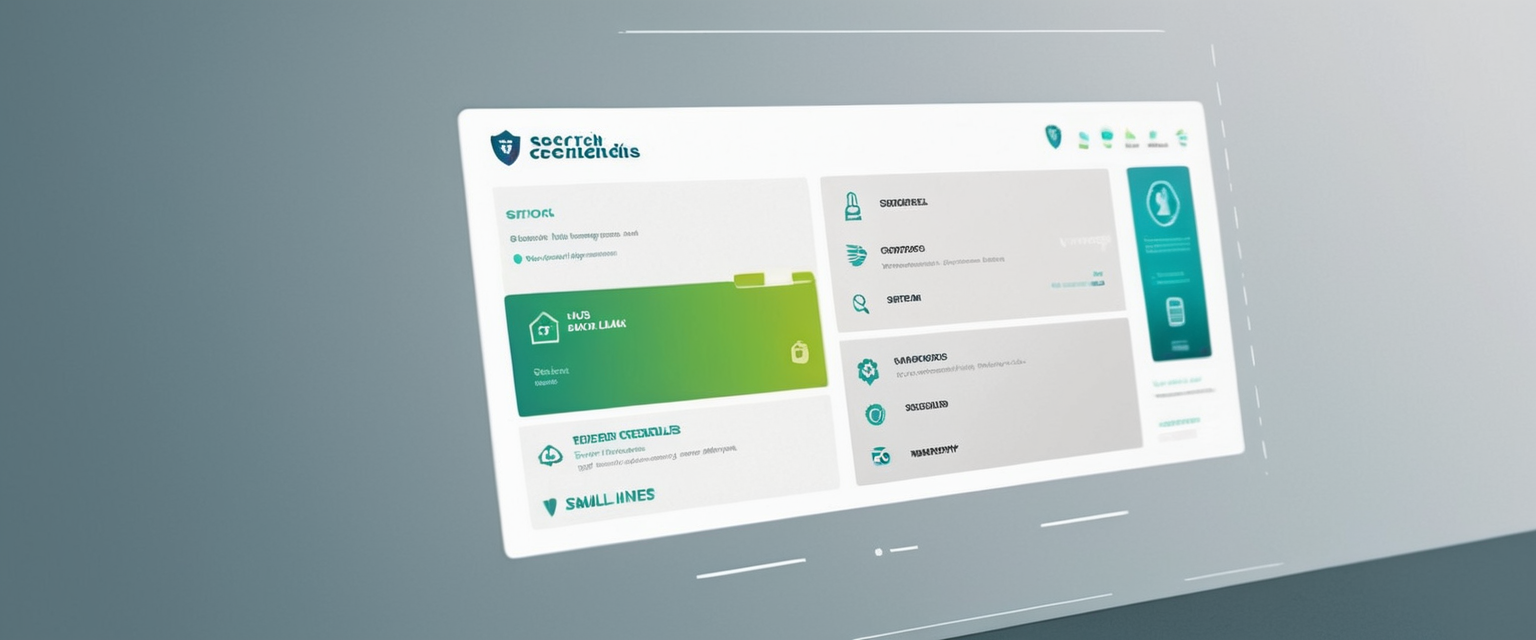
Account inventory represents a fundamental yet frequently overlooked aspect of modern cybersecurity and personal digital management. As the digital landscape continues to expand with each passing year, individuals and organizations accumulate an ever-growing collection of online accounts across diverse platforms, services, and applications. The ability to maintain a comprehensive, accurate, and secure inventory of these accounts—coupled with their associated credentials—has become not merely a matter of convenience but a critical security imperative. This report examines the multifaceted dimensions of account inventory management, encompassing the technological frameworks that support credential storage, the significant security vulnerabilities posed by unmanaged accounts, the organizational methodologies for maintaining account records, and the practical implementations of password management systems that protect sensitive authentication data through advanced encryption and security protocols.
Understanding Account Inventory and Its Strategic Importance
Account inventory refers to the complete cataloging and management of all user accounts and associated credentials that an individual or organization maintains across various digital platforms and services. This inventory encompasses not only the obvious accounts such as email addresses and financial services, but also extends to include access credentials for cloud storage systems, social media platforms, subscription-based services, workplace applications, and emerging digital ecosystems. The significance of maintaining a comprehensive account inventory cannot be overstated, as the absence of such an inventory creates multiple vulnerabilities throughout an organization’s or individual’s digital ecosystem.
The foundational importance of account inventory stems from several interconnected factors that directly impact both security posture and operational efficiency. First, organizations that lack visibility into their complete account portfolio cannot effectively manage security risks. Without knowing what accounts exist, where they reside, and what permissions they maintain, security teams cannot identify weak points or unauthorized access pathways. Second, account inventory directly impacts compliance with regulatory requirements across multiple industries and jurisdictions. Many regulatory frameworks—including GDPR, HIPAA, PCI DSS, and others—explicitly require organizations to maintain documentation of user access rights and to conduct periodic reviews to ensure that access remains appropriate and properly controlled. Third, the financial implications of poor account inventory management extend beyond the immediate costs of security incidents; they encompass expenses related to managing redundant applications, maintaining unnecessary licenses, and responding to audit findings or regulatory violations.
From a personal perspective, individuals who maintain inaccurate or incomplete account inventories face escalating risks of identity theft, fraud, and unauthorized access to sensitive information. Research demonstrates that the average individual maintains over 240 online accounts throughout their digital lifetime, yet most people cannot accurately recall even a fraction of these accounts. This dramatic disconnect between the number of accounts actually maintained and the number that individuals can remember creates an environment where old, forgotten accounts remain vulnerable to exploitation by threat actors who specifically target dormant or unmaintained profiles.
The Hidden Threat Landscape: Dormant and Orphaned Accounts
One of the most significant yet underappreciated risks within the digital environment emerges from accounts that have become inactive, abandoned, or orphaned. These accounts represent a distinct category of security vulnerability that deserves careful examination because they often retain access to sensitive systems while simultaneously escaping the notice of both users and administrators. The distinction between different types of inactive accounts merits clarity, as organizations must address each category through differentiated management strategies.
Dormant accounts refer to user accounts within computer systems or networks that have remained inactive or unused for a considerable period of time. These accounts continue to exist within systems and may retain active access privileges despite the fact that no legitimate user is actively utilizing them. According to research data, approximately 52% of all user accounts in public sector companies have not been used in more than six months, presenting a significant cybersecurity threat surface. The danger posed by dormant accounts extends beyond simple unauthorized access; these accounts frequently retain the access privileges that were appropriate when they were actively used, creating a situation where an old account might hold substantially more permissions than would be granted to a new account with similar functions.
Orphaned accounts represent a more specifically defined category of risk. An orphaned account is a user account that retains active access to corporate systems, services, and applications but lacks a valid, identifiable owner. Orphaned accounts typically arise during organizational transitions such as employee departures, role changes, mergers and acquisitions, or system upgrades. They differ from simply inactive accounts because the access permissions remain unchanged and the account infrastructure remains intact, even though no one within the organization can identify who should be responsible for managing or monitoring the account. This combination of active permissions paired with absent accountability creates an exceptionally dangerous security posture.
The risks associated with these categories of unmanaged accounts are substantial and multifaceted. Unauthorized Access constitutes the primary immediate risk, as orphaned and dormant accounts can become gateway pathways for attackers seeking to penetrate organizational networks. Threat actors explicitly target these overlooked accounts because they are frequently undermonitored, may have weak security controls, and often possess elevated access privileges that were granted years prior when the original account owner held a more senior position. Once attackers gain access to a dormant account, they can operate within organizational systems with minimal detection risk, since activity logs for these accounts are rarely reviewed.
Privilege Abuse emerges as a secondary but equally serious risk. Many orphaned accounts retain administrative or elevated privileges from their original purposes, allowing attackers who compromise these accounts to perform unauthorized actions such as data manipulation, lateral movement through systems, or system-wide disruptions. In one notable example, an employee who departed a company retained access to legacy systems through an account that was never properly deactivated, and that account maintained administrative permissions that far exceeded what the organization would have granted to current employees with similar functions.
The compliance implications of unmanaged accounts create additional legal and financial exposure. Organizations must comply with regulatory frameworks that explicitly address account management, access control, and user activity monitoring. Regulatory bodies including those enforcing GDPR, HIPAA, and PCI DSS standards require organizations to maintain accurate records of who has access to what systems and data, and to periodically verify that access rights remain appropriate. Dormant and orphaned accounts that exist outside of formal inventory systems create noncompliance conditions that can result in substantial fines, legal liabilities, and reputational damage.
Account Discovery and Identification: Building the Foundation
Establishing a comprehensive account inventory begins with a systematic discovery process that identifies all accounts currently existing within an organization’s or individual’s digital ecosystem. The discovery phase represents a critical juncture, as the completeness of this initial inventory directly determines the effectiveness of all subsequent management efforts.
For organizations, automated discovery tools have become essential components of modern account management infrastructure. These tools employ various scanning methodologies to identify accounts and credentials that may exist throughout an organization’s environment, including accounts created through standard provisioning processes as well as shadow accounts that were created outside of formal IT governance structures. Comprehensive asset discovery tools can scan network environments to identify devices, query active directory systems to enumerate user accounts, integrate with cloud providers to discover cloud-based resources, and cross-reference multiple data sources to identify accounts that may have been created but never formally documented. The IT asset management approach extends beyond simple account identification to encompass comprehensive tracking of hardware, software, networking devices, and the associated access credentials required to manage these resources.
For individuals, the discovery process requires a more manual approach, though emerging technologies have begun to simplify this work. The most effective individual discovery methodology begins with systematic email examination, as most online services send confirmation emails when accounts are created, and these confirmation messages provide a historical record of account creation across digital services. Individuals should also examine browser-stored login credentials, review financial statements for subscription charges that may indicate forgotten accounts, search for historical registrations using email addresses as search parameters, and employ specialized services that scan the internet and dark web for profiles associated with specific email addresses.
Services like Yorba represent an emerging category of tools designed specifically to help individuals identify forgotten accounts and digital profiles. These services scan both the visible internet and the dark web to locate profiles associated with provided email addresses, returning comprehensive reports that often reveal hundreds of accounts that the individual had forgotten about. According to research data compiled by these services, the average individual discovers approximately 240 unique online accounts when subjected to comprehensive scanning, with many of these accounts having been entirely forgotten by the original user.
Beyond the discovery of accounts themselves, the identification process must also encompass understanding what data and permissions each account contains and grants. For each identified account, administrators and individuals should document critical metadata including the service provider, the creation date if available, the current account status, the access permissions the account maintains, the date of last use, any associated payment information or subscription details, and the criticality level of the account to ongoing operations or personal activities. This detailed information becomes essential for subsequent prioritization and lifecycle management decisions.

Organizing and Categorizing Account Credentials
Once accounts have been identified and their metadata documented, the next critical phase involves organizing these accounts into logical structures that support both security and accessibility. Effective organization serves multiple simultaneous purposes: it enhances security by supporting granular access controls, improves operational efficiency by enabling rapid location of needed credentials, supports audit and compliance activities by providing clear documentation of account structures, and facilitates incident response by helping administrators quickly identify the scope of potential compromise when security incidents occur.
Creating a comprehensive categorization scheme represents the foundation of effective account organization. Organizations and individuals should establish categories based on multiple dimensions that reflect how accounts are actually used and accessed. Common categorization approaches include organizing by account type (such as OS accounts, database users, application service accounts, and human user accounts), by operational environment (such as production, testing, development, and staging systems), by business function (such as accounting, human resources, information technology, and sales), by risk level (such as critical infrastructure accounts, sensitive data accounts, and standard operational accounts), and by access patterns (such as local access, remote access, and integrated service accounts).
Modern password management systems support sophisticated organizational schemes that move beyond simple folder hierarchies. Flat taxonomy structures have emerged as more effective than deeply nested folder hierarchies because they allow credentials to be located through multiple search dimensions simultaneously. Rather than requiring users to navigate through progressively deeper folder levels—an approach that demands advance knowledge of the exact folder structure and organization logic—flat taxonomy approaches enable users to apply multiple filters and tags to locate credentials quickly. For example, a user seeking a database account for the production environment might search using the tags “database,” “production,” and “financial systems” simultaneously, regardless of the actual folder structure containing the credential.
Implementing structured naming conventions throughout the account inventory provides critical support for searchability and prevents confusion when multiple similar accounts exist. For instance, rather than using vague names like “admin” or “service account,” naming conventions should incorporate meaningful information about the account’s purpose, the system it accesses, the environment in which it operates, and potentially the date it was created or is scheduled for rotation. An example convention might follow the pattern: “SYS_PROD_FINANCE_READONLY_2024Q4,” which immediately conveys that the account is a system account, operates in the production environment, manages financial systems, maintains read-only permissions, and was implemented or rotated in the fourth quarter of 2024.
Protect Your Digital Life with Activate Security
Get 14 powerful security tools in one comprehensive suite. VPN, antivirus, password manager, dark web monitoring, and more.
Get Protected NowPriority leveling represents another essential organizational dimension that supports both security and operational efficiency. Accounts should be classified into priority tiers based on their criticality to business operations and the sensitivity of the systems they access. High-priority accounts—such as those providing administrative access to critical infrastructure, master database credentials, or accounts managing financial systems—require more frequent password rotations, stricter access controls, more comprehensive monitoring, and more rapid response procedures if they become compromised. Medium-priority accounts require standard security practices, while lower-priority accounts might operate with less stringent requirements while still maintaining baseline security standards.
The implementation of custom tags and metadata fields extends organizational capabilities significantly. Beyond the standard folder and naming convention approaches, modern credential management systems allow administrators to apply unlimited custom tags to credentials, enabling multi-faceted organization that reflects the complex, overlapping dimensions of real-world account usage. An account might simultaneously carry tags indicating the business unit that owns it, the systems it accesses, the compliance frameworks it must satisfy, the access control model it participates in, and the individuals or groups authorized to use it.
Encryption and Security Architecture for Stored Credentials
The security of stored credentials within account inventories depends fundamentally on the encryption and access control mechanisms employed by the password management systems that house these credentials. Understanding these technical safeguards represents an essential component of account inventory management, as the security level of the entire inventory is constrained by the security level of the weakest link in the system.
Advanced Encryption Standards (AES) with 256-bit key length have emerged as the industry standard for protecting stored credentials at rest. AES-256 encryption utilizes a 256-bit encryption key, which provides vastly more computational security than weaker alternatives. To illustrate the difference, an encryption system using a 256-bit key maintains \(2^{256}\) possible key combinations—a number so astronomically large that brute-force attacks attempting to try all possible combinations would require computational resources and time vastly exceeding any conceivable budget or time frame. This mathematical foundation ensures that encrypted credentials cannot be deciphered through computational attacks even if threat actors gain access to the encrypted database itself.
Password managers implement encryption through several architectural approaches, each with distinct security and usability tradeoffs. Client-side encryption approaches execute encryption operations on the user’s local device, meaning that credentials are encrypted before they ever leave the user’s computer and travel across the internet to cloud servers. In this architecture, the password management service provider cannot access the unencrypted credential data, as the encryption and decryption operations occur entirely on the client side. This approach provides robust privacy—the service provider genuinely cannot reveal user credentials even if compelled to do so—but requires that encryption keys remain securely stored on the user’s device.
The zero-knowledge principle has become increasingly important in password manager security design. Zero-knowledge architecture means that the service provider architecture prevents the service provider from accessing user credentials and other sensitive data, even if the provider’s systems are compromised. The encryption operations occur on the user’s device before any data transmission, and the encryption keys remain under the user’s control. This approach eliminates scenarios where a completely trustworthy service provider might be compromised by attackers who then gain access to vast quantities of stored credentials. Even if attackers successfully breach the password manager’s servers, they would only obtain encrypted data that cannot be decrypted without access to individual users’ encryption keys—which remain on users’ devices and never travel to the cloud servers.
Master password systems form the foundational security anchor for most password management approaches. Users select a single, strong master password that serves as the encryption key for all other credentials stored within the system. The security of the entire credential inventory depends critically on the security of this single master password. If an attacker obtains the master password through phishing, keylogging, or other means, all credentials stored within the system become compromised. This concentration of security risk motivates strong recommendations that users employ exceptionally robust master passwords that combine lengthy character sequences (minimum 15-20 characters), uppercase and lowercase letters, numbers, and special symbols, and that are not derivable from personal information or common patterns.
Multi-factor authentication (MFA) represents a critical additional security layer for accessing password management systems. Rather than relying solely on the master password for authentication, MFA requires users to provide multiple independent forms of evidence to prove their identity. Common MFA approaches include time-based one-time password (TOTP) systems where users generate temporary codes using authenticator applications, physical hardware keys (such as YubiKey devices) that users must physically possess, biometric authentication methods such as fingerprints or facial recognition, and out-of-band authentication approaches where authentication codes are delivered through secondary channels such as SMS or email. The requirement to provide multiple authentication factors substantially increases the security posture, as compromise of any single authentication factor does not grant complete account access.
Key derivation functions add additional security layers to password protection. Rather than using the master password directly as an encryption key, sophisticated password managers apply key derivation functions (KDFs) that transform the master password into encryption keys through computationally intensive processes. Functions such as PBKDF2, bcrypt, or Argon2 require significant computational resources to execute, meaning that attackers cannot rapidly test thousands of password guesses against encrypted credentials. This computational cost makes brute-force attacks against credential databases substantially more expensive and time-consuming, effectively raising the barrier against attacker success.
Password Manager Technology Landscape
The technology landscape for password management and credential storage encompasses several distinct categories of solutions, each serving different user populations and use cases with varying security architectures and operational characteristics.
Local password vaults store encrypted credentials exclusively on users’ local devices, without any cloud synchronization or remote server components. These systems provide maximum security against server-side breaches, as no credentials ever leave users’ devices. However, local vaults create challenges for users who access multiple devices, as synchronization between devices must be manually managed, and if a device containing the vault is lost or damaged, all stored credentials may become inaccessible unless backup copies have been created. Local vaults suit users who prioritize security above convenience and who have established backup procedures.
Cloud-based password vaults store encrypted credentials on remote servers maintained by service providers, enabling users to access their credentials from any device with internet connectivity. Users maintain these accounts through web interfaces, browser extensions, or mobile applications that seamlessly integrate credential access into their authentication workflows. Cloud-based vaults provide superior convenience, but concentrate security dependencies on the service provider’s infrastructure. Responsible providers implement zero-knowledge architectures that prevent them from accessing unencrypted credentials, but users must evaluate provider security claims carefully.
Enterprise password management solutions serve organizational requirements that exceed individual password manager capabilities. Solutions like 1Password Business, LastPass Teams, Bitwarden Teams, and ManageEngine Password Manager Pro integrate with organizational infrastructure including Active Directory or Entra ID systems, provide centralized administration and access control, implement session recording and audit logging, support privileged account management, and enable sophisticated compliance reporting. These solutions address the needs of organizations that must manage thousands of credentials, enforce organizational password policies, maintain comprehensive audit trails, and satisfy regulatory compliance requirements.
Enterprise solutions typically incorporate privileged access management (PAM) features that extend beyond simple credential storage. PAM capabilities include automated password rotation where system-managed passwords change on scheduled or trigger-based intervals, just-in-time access provisioning where credentials are created temporarily for specific sessions rather than remaining permanently accessible, session recording where all actions performed with privileged accounts are recorded for later audit, and behavioral analysis that identifies suspicious access patterns. These advanced capabilities address organizational requirements that individual password managers cannot satisfy.

Regular Audits and Lifecycle Management of Account Inventory
Account inventory represents not a static snapshot but a continuously evolving landscape that requires regular review, assessment, and management. The lifecycle of accounts from creation through active use to eventual retirement necessitates systematic processes that maintain inventory accuracy and ensure that access rights remain appropriate throughout the account’s existence.
Scheduled periodic audits represent the foundational practice for maintaining account inventory accuracy and identifying emerging risks. Organizations should establish audit schedules that balance the need for comprehensive review against operational capacity constraints. Best practice recommendations suggest conducting comprehensive reviews of the entire account inventory annually, with more frequent targeted reviews of high-risk accounts on quarterly or monthly schedules. The audit frequency should reflect the risk profile of the account inventory, with highly critical systems receiving more frequent review than lower-risk systems.
The audit process begins with account access verification, where administrators confirm that individuals who are listed as having access to accounts actually require that access and actively use it. This verification process often reveals accounts that have been granted to employees or contractors who have since changed roles, departed the organization, or who no longer require access. For each individual, auditors should identify all accounts the individual has access to, verify that these access rights align with the individual’s current role and responsibilities, and document the rationale for access retention or recommend access removal.
Compliance verification represents another critical audit dimension, particularly for organizations operating in regulated industries. Auditors should verify that account access patterns comply with regulatory requirements, that segregation of duties is maintained (ensuring that no single individual possesses combinations of permissions that could enable fraudulent activity), that password policies are being followed, that multi-factor authentication is enabled where required, and that account activity is being appropriately logged and monitored.
The privilege creep identification process surfaces a frequently encountered problem where individuals accumulate additional permissions over time without formal re-evaluation of whether they require all accumulated privileges. An employee who transfers between departments or receives promotions might retain access to systems needed for previous roles while gaining new access rights for current responsibilities. Over time, this accumulation creates individuals with excessive access rights that substantially exceed what they require for current functions. Audits should identify and remediate privilege creep by removing access to systems no longer needed.
Dormant account identification procedures specifically search for accounts that have not been accessed within defined timeframes. Organizations typically establish policies specifying how long accounts can remain inactive before they are targeted for review and potential removal. Common policies specify that accounts unused for 90 days should be reviewed, accounts unused for six months should be disabled if no business requirement for retention exists, and accounts unused for one year should be deleted unless specific documentation justifies continued retention.
Formal deprovisioning procedures must be triggered when employees depart organizations or when role changes eliminate the need for specific access rights. Effective deprovisioning extends beyond simply disabling employee accounts; it must encompass reviewing all systems the departing individual accessed, removing credentials they had been using, disabling or deleting accounts across the full technology estate, and capturing any information the departing individual possessed that others require access to. Incomplete deprovisioning frequently creates orphaned accounts that become security vulnerabilities.
Best Practices for Account Inventory Management
The implementation of account inventory management best practices transforms account management from a reactive, crisis-driven activity into a proactive, systematic process that continuously strengthens security posture. The following practices represent evidence-based approaches that organizations and individuals should implement to maximize account inventory security and operational value.
Centralized inventory maintenance represents perhaps the most fundamental best practice. All accounts should be documented in a single, authoritative inventory system rather than scattered across multiple spreadsheets, password manager systems, or undocumented locations. This centralization enables comprehensive visibility, supports identification of gaps and overlaps, facilitates audit activities, and enables rapid response during security incidents. The centralized system should maintain current information about each account including account identifier, associated system or service, account owner or responsible party, current status, permissions granted, creation date, date of last activity, and compliance requirements applicable to the account.
Regular access reviews should be institutionalized as scheduled, recurring processes rather than ad-hoc activities conducted only when problems become apparent. Organizations should establish specific schedules for access reviews—such as quarterly reviews for all users or annual reviews of all accounts with annual reviews of high-risk accounts conducted quarterly—and should integrate access review obligations into job responsibilities of supervisors and administrators. These regular reviews maintain current understanding of who has access to what and identify inappropriate access that has accumulated through organizational changes or forgotten assignments.
Credential rotation policies should mandate that passwords and cryptographic credentials change on defined schedules, particularly for sensitive accounts. While user-facing password rotation policies have become less stringent in recent years—as research has shown that frequent forced rotations sometimes encourage weaker password practices—automated credential rotation for service accounts and administrative credentials remains essential. Automated rotation systems should change service account credentials on schedules such as every 30, 60, or 90 days depending on account sensitivity, with the rotation occurring automatically without manual intervention.
Principle of least privilege implementation ensures that accounts receive only the minimum access permissions required for their intended functions. Rather than provisioning accounts with broad permissions “just in case” they might be needed, administrators should carefully evaluate what access each account requires and grant only those specific permissions. This practice substantially reduces the impact if an account becomes compromised, as the attacker gains access only to the limited resources the account can reach rather than potentially compromising entire systems.
Multi-factor authentication enforcement should be mandatory for all sensitive accounts, particularly administrative accounts, accounts accessing financial systems, and accounts maintaining personal or sensitive data. MFA substantially increases authentication security by requiring attackers to compromise multiple independent authentication factors rather than just obtaining a password. Organizations should establish clear policies requiring MFA for all privileged accounts and strongly encouraging MFA for user accounts accessing sensitive data.
Comprehensive logging and monitoring of account activity enables detection of unauthorized access, policy violations, and unusual patterns that may indicate compromises. All activity associated with privileged accounts should be logged, including login attempts (both successful and failed), credential access events, actions performed with the account, and administrative changes to the account. These logs should be retained for defined periods—typically at least one year—and should be accessible for audit and investigation activities.
Incident response procedures should specifically address scenarios involving compromised accounts or credentials. Organizations should maintain documented procedures for responding to account compromise, including steps for immediately revoking access associated with the compromised account, preserving evidence for forensic investigation, notifying affected parties, identifying what systems might have been accessed or compromised through the account, and implementing remediation measures.
Digital Footprint Management and Personal Account Inventory
Beyond organizational account management, individuals must actively manage their personal digital footprints by maintaining awareness of the accounts they have created and taking steps to secure, retain, or eliminate these accounts according to their personal needs and security requirements.
Individuals should conduct personal digital footprint assessments to understand the full scope of their online presence. This assessment should identify social media accounts, email accounts, shopping and payment accounts, subscription services, financial accounts, digital property and cloud storage accounts, and any other online services accessed. Many individuals are surprised to discover the extent of their digital footprint when they conduct comprehensive reviews, often finding accounts they had completely forgotten about and did not realize still contained personal information.
Account deletion decisions should be made systematically for accounts no longer needed or used. Individuals should distinguish between accounts that serve ongoing purposes and should be retained and updated, and dormant accounts that no longer serve any function and should be deleted. For accounts targeted for deletion, individuals should follow each service’s official account deletion procedures rather than simply stopping use of the account. Simply ceasing to use an account does not delete it; the account continues to exist and retain personal information. Proper deletion procedures ensure that services actually remove account data rather than merely marking accounts as inactive.
For accounts being retained, individuals should implement security hardening measures including strong, unique passwords for each account, multi-factor authentication where available, updated security recovery information (alternate email addresses and phone numbers), and regular monitoring of account activity. Individuals should also review account privacy settings to understand what data the service collects, how data is used, and what information is shared with third parties.
Password reuse avoidance represents a critical personal security practice. Using identical or similar passwords across multiple accounts creates situations where compromise of a single account through a data breach at one service provider grants attackers immediate access to all other accounts using the same password. Password managers essentially eliminate the need for password reuse, as they can generate, store, and manage unique strong passwords for each account, requiring users to remember only a single master password.
The Power of Knowing What You Own
Account inventory management has evolved from a peripheral administrative task into a cornerstone of organizational cybersecurity and individual digital security. The comprehensive understanding of what accounts exist, what credentials they employ, what permissions they maintain, and how they are secured represents essential knowledge for organizations seeking to defend their information assets and for individuals seeking to protect their personal information and digital identity.
The proliferation of online accounts across organizational and personal contexts creates a landscape where unmanaged accounts represent permanent security vulnerabilities. Dormant and orphaned accounts that slip outside of formal management processes become attractive targets for threat actors seeking footholds into systems. Organizations must implement systematic discovery processes that continuously identify accounts across their environments, establish clear inventory documentation that maintains current information about all identified accounts, implement robust encryption and access control mechanisms that protect credentials, and conduct regular audits that verify access remains appropriate and that dormant or unnecessary accounts are identified and remediated.
Individuals must similarly adopt personal account inventory disciplines that help them maintain awareness of their digital footprints, manage account security through password management systems, periodically review and delete unnecessary accounts, and implement protective measures for retained accounts. The deployment of modern password management technology removes many practical barriers that previously made account security burdensome, enabling both individuals and organizations to maintain strong security practices without sacrificing operational efficiency.
Organizations should prioritize the implementation of centralized inventory systems that provide unified visibility into the account landscape, should establish regular audit schedules that maintain inventory accuracy, should deploy enterprise password management solutions that provide encryption, monitoring, and compliance reporting capabilities, and should develop incident response procedures that address account compromise scenarios. Individuals should utilize password managers to eliminate password reuse, should conduct periodic digital footprint assessments to identify forgotten accounts, should implement multi-factor authentication on important accounts, and should follow proper procedures when deleting accounts they no longer need.
The investment of time and resources in account inventory management yields substantial returns through reduced security incident risk, improved regulatory compliance posture, more efficient authentication processes, and enhanced ability to respond rapidly to security incidents. As the digital environment continues to evolve and expand, the discipline of account inventory management will only increase in importance, establishing a foundation upon which comprehensive information security programs can be built.






